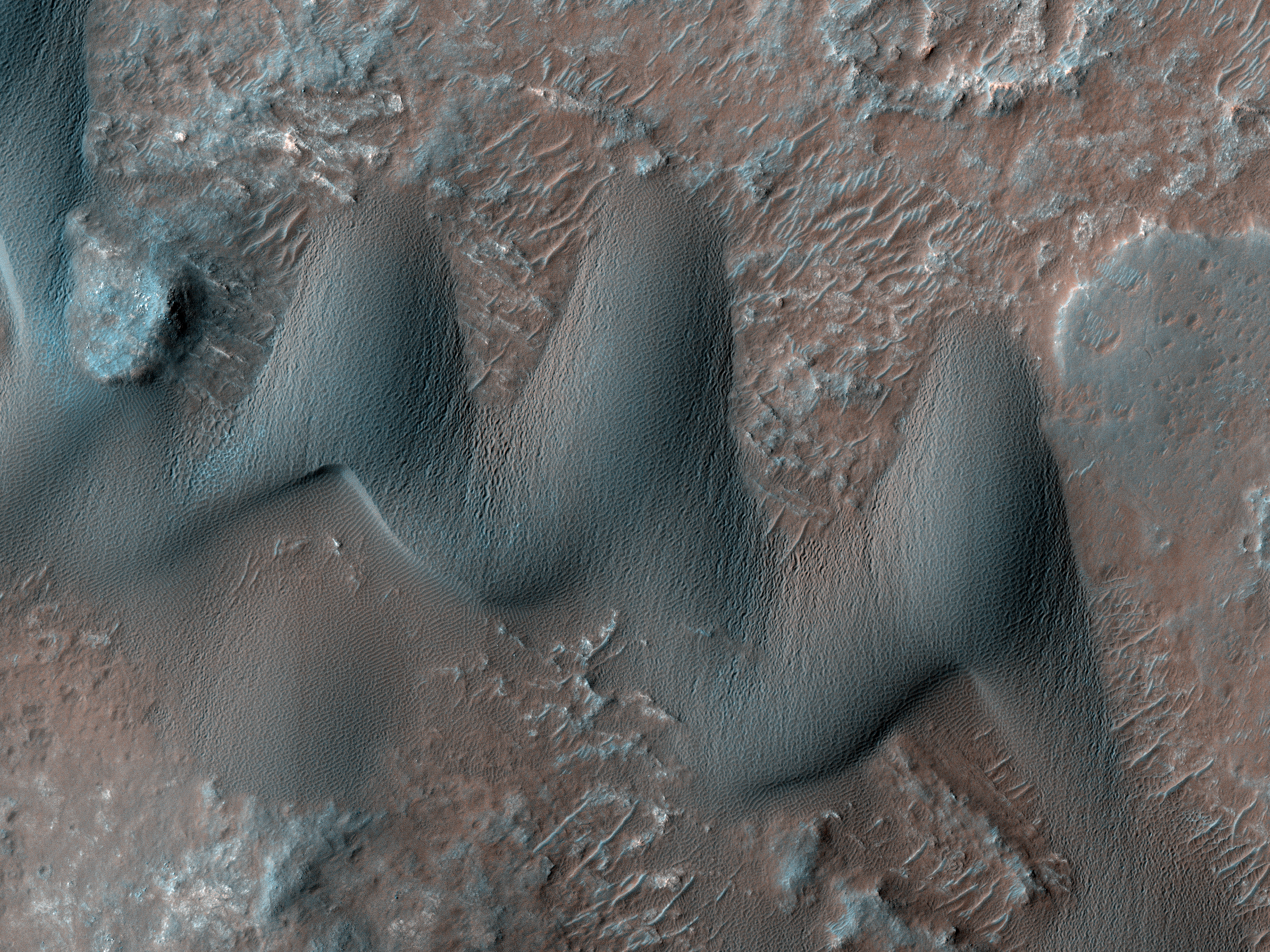Sand dunes commonly form when particles that are being moved around by the wind find a natural barrier to accumulate and build a hill-like formation. Scientists study dunes because their shape and size can give us valuable information about the wind directions and speeds in current and past climates.
For instance, barchan dunes are crescent-shaped, and they form when the wind blows mainly from one direction (perpendicular to the crescent long edge). On the other hand, “star” dunes have three or more “arms,” and form in environments that that are affected by multiple wind directions.
Our image shows an area on Mars with both star and barchan dunes next to each other. This implies that wind directions have changed with time, or that the surrounding landscape is creating complex wind patterns.
Scientists can study HiRISE images collected over time of the same dunes to observe whether they are moving or not, and if so, how fast. By observing multiple dune systems over many seasons, we can get a better picture of wind regimes on Mars and possibly how they have evolved with time.
ID:
ESP_063901_1710date: 14 March 2020
altitude: 261 km
https://uahirise.org/hipod/ESP_063901_1710
NASA/JPL-Caltech/University of Arizona
#Mars #science #NASA
